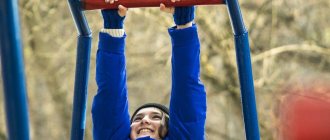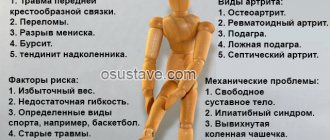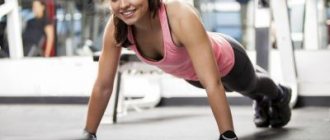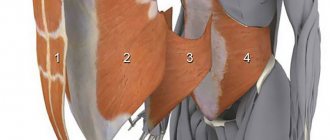When performing any physical activity, in particular squats, you need to breathe properly. The saturation of the body with oxygen, proper energy expenditure and the effectiveness of the workout as a whole depend on this.
If during exercise a person breathes incorrectly, for example, too quickly or does not exhale deeply enough, then it becomes quite difficult for the body, there is an additional load on the heart and the entire circulatory system, and in addition, the effect of the training is not as high as expected.
The benefits of proper breathing when squats
Every trainee, from a professional athlete to a person who exercises occasionally, needs to breathe properly.
During squats, you should pay particular attention to your breathing tactics, as this has a positive effect on:
- Achieving maximum physical results.
- Health safety.
- Normal muscle work.
If you inhale and exhale correctly, the risk of muscle strains is reduced by 30% - 35%.
- Saturation of all cells with oxygen.
- The work of the heart.
Improper breathing during squats puts extra strain on the heart and causes it to beat faster.
- Uniform distribution of nutrients throughout tissues and cells.
- Physical endurance.
Correctly done inhalations and exhalations increase physical endurance by 2.5 times.
Types of breathing
In physiology, breathing is divided into two types:
- Thoracic, in which there is a smooth expansion of the chest and raising of the ribs.
The chest appearance is typical during everyday life, when a person does not perform physical exercise, but performs ordinary activities at a calm and moderate pace.
- Abdominal, characteristic when a person trains or resorts to physical effort. During this type it is noted:
- changes in the chest, it becomes denser and larger in volume;
- inhalations - exhalations become more frequent and deeper;
- the diaphragm starts working.
How to breathe during classic squats?
In order to do the exercise as easily as possible, you need to breathe correctly.
When performing classic squats, a person is recommended to resort to the following technique:
- Stand up straight, completely relax for 2 - 3 seconds and exhale as deeply as possible.
- Lower yourself calmly and evenly, while taking a deep breath through your nose.
During the first squat, you need to make sure that your lips are closed.
- At the moment when the pelvis is level with the line of the knees, you need to exhale.
- The next entry must be made at the moment of raising the pelvis.
Breathing while squatting with a barbell
When performing exercises with a barbell, the load on all organs increases by 2–3 times, therefore, you need to monitor your breathing technique especially carefully.
If the trainee neglects the advice and takes incorrect inhalations and exhalations, this can lead to:
- ligament and muscle ruptures;
- enormous load on the heart;
- sudden darkening of the eyes;
- fainting;
- muscle pain;
- cramps.
For people who squat with a barbell, basic breathing rules have been developed, which consist of performing ten important steps:
- Before starting your workout, walk or stand quietly for 2–3 minutes so that your breathing and heart rate are completely normalized.
It is not recommended to move on to squats with a barbell immediately after performing other exercises, for example, push-ups or a short (long) distance race due to the increased load on the lungs and cardiovascular system.
- Take an extremely deep, but smooth inhale and exit, and then approach the bar.
- Take the barbell in your hands and throw it over your shoulders.
- Spread your legs as wide as possible, but at the same time make it comfortable to perform the exercise.
- Spoil your back.
- Take a deep breath.
- Go down to the intended limit, for example, to the knee line.
- Hold your breath for two seconds.
- While lifting the body, exhale smoothly, and it can be done through the nose or through the mouth, the main thing is that the teeth are interlocked.
- Stand up straight, and then make a sharp release of the remaining oxygen.
When exercising with a barbell, it is necessary to breathe correctly from the first squat, only in this case, throughout the entire workout, breathing will not be interrupted, and the load on the heart and muscles will be optimal.
Exceptions
Exercises such as barbell squats and various barbell rows are performed using our trainer’s technique somewhat differently than simply pushing or pulling exercises. Let's take a closer look at them.
Squats
Classic squats with a barbell on your shoulders (performed by Alexey Sorokin, the initiator of the “Get Slim!” section). When the barbell is on your shoulders, before squatting you need to inhale three-quarters of the way, then perform the squat completely while holding your breath, exhale immediately after performing one repetition. You can also exhale when lifting the barbell upward.
Traction
You need to breathe when doing any exercise from the deadlift group in much the same way as when doing squats. When the starting position is occupied, inhale three-quarters of the way. While breathing is held, an amplitude of effort is made. Having straightened up with the barbell, you can already exhale. also exhale after completing one full repetition .
So, you learned about the breathing technique from Vyacheslav Andreevich Popov. Good luck to you from the FitSchool team!
The article was written based on the following video:
Breathing while resting between squats
When a person trains, special attention should be paid to breathing during rest.
Otherwise, the trainee:
- will not be able to fully recover between sets of squats;
- his heart rate will not have time to normalize;
- there will be additional stress on the lungs and vascular system;
- gets tired quickly;
- may lose consciousness during the next series of squats.
To prevent all negative consequences during rest, it is recommended:
- Inhale and exit exclusively through your nose.
- When inhaling, try to get as much oxygen as possible into the lungs.
- Exit should be done smoothly and until the chest is cleared of oxygen.
How to breathe when doing Bubnovsky squats?
Sergei Bubnovsky, who is the author of many books on physical culture, has developed certain recommendations for breathing techniques during squats.
In his opinion, it is effective for every person to adhere to the following rules:
- Keep your back and arms straight while doing squats.
- Stand facing the wall.
- Squat only while inhaling.
- When lifting the body, make a sharp and as deep as possible exit, while making a drawn-out sound “ha”
When performing any physical activity, in particular squats, it is important for a person to monitor his breathing. The degree of oxygen saturation of all cells and tissues, the functioning of the cardiovascular system, the load on the muscles, etc. depend on this. If the technique of inhalation and exhalation is not followed, there is a risk of losing consciousness, worsening heart function, and also physically not being able to withstand the entire workout to the end.
Blitz tips:
- do not forget to rest between sets of squats;
- before starting an exercise with a barbell, you need to make sure that your breathing has leveled out;
- If breathing is not restored even after 10-15 minutes after the end of the workout, even though the load was feasible, you should consult a doctor.
Do you know how to breathe correctly when squats, because the effectiveness of the exercise, the endurance of the athlete, and safety for his health depend on this. This last point is especially important for weightlifters who squat with heavy equipment.
To understand why proper breathing when doing squats for weight loss or, conversely, for building muscle mass is so important, let's figure out what happens in the body during each inhalation and exhalation.
Correct breathing technique when squats according to Bubnovsky
Squats are included in Sergei Bubnovsky’s book “50 Essential Exercises for Health.” The author also recommends combining the exercise with proper breathing techniques.
To perform squats, Bubnovsky recommends standing facing a stationary support and grasping the rubber shock absorber attached to the support. The shock absorber must be tensioned and kept at chest level. The back and arms should be straight. As you inhale, do a squat, and as you exhale, lift up. In this case, the exhalation should be accompanied by extension of the legs and the sound “ha-a”. This is the main feature of the combination of breathing and squats according to Bubnovsky. The exhalation should be sharp and the sound clear. You need to push out all the accumulated carbon dioxide with this sound.
Why is breathing correctly so important?
During inhalation, oxygen enters the lungs, which, together with the blood, is carried to every cell of our body, including the brain. Hypoxia or oxygen starvation during periods of intense physical activity is severe stress for the body, which can result in loss of consciousness.
Every athlete should know how to breathe correctly during squats, both without a barbell and with additional weight, at all stages of the exercise. By the way, the basis of correct breathing technique is based on the main rule - exhalation is done at maximum effort, and inhalation is done at the stage preceding it. That is, if we talk about squats, exhale while lifting, and inhale, respectively, while squatting.
You need to breathe smoothly, without jerking, try to maintain a uniform pace and depth of breaths. Otherwise, the load on the heart increases sharply, arrhythmia may develop, and blood pressure may rise. Remember this no matter what exercise you choose: Bulgarian split squats or hack exercises.
Abdominal and chest breathing
Before moving on to the technique of proper breathing during squats, let’s dwell briefly on its types. Physiology divides breathing into two types.
- Thoracic – in the process there is a rise and fall of the chest;
- Abdominal - when it visually seems that a person is breathing from the stomach.
In a calm state, the volume of air that we inhale through the chest is quite enough for normal nutrition. During moments of stress, the body requires more oxygen, so you must learn to breathe with your stomach, or, to be more precise, with your diaphragm.
To do this, slowly inhale air through your nose and fill it not with your chest, but with your stomach, that is, as if pushing it down into the peritoneum. And then exhale smoothly through your mouth or nose, as convenient for you.
How to breathe correctly during classic squats
We have found out the importance of breathing during squats for the heart, and now let’s move on to describing the correct technique in classic lunges:
- Get into the starting position, exhale;
- Start squatting, while gently inhaling air through your nose, without jerking. You should fill your lungs as much as possible precisely at the lowest point of the exercise;
- If the latter involves short-term fixation of the body before rising, at this moment it would be correct to hold your breath (no longer than 5 seconds);
- At the moment of rise, begin to free your lungs from carbon dioxide, while you can exhale completely until you return to the starting position.
Breathing during classic squats
It is recommended to begin mastering the technique of squats and proper breathing when performing them with your own weight, that is, without a barbell or dumbbells.
The training will look like this:
- We take the starting position and free the lungs from carbon dioxide (exhale).
- We smoothly lower ourselves down, clench our lips tightly, and slowly inhale air through our nose. There is no place for haste: you still won’t be able to capture more oxygen than your lungs can accommodate.
- Inhalation must be stopped at the moment when the thighs are parallel to the floor - the time for exhalation begins. As we rise, we push carbon dioxide out of the lungs, and we can only finish exhaling at the moment of raising the body halfway, that is, we do it more intensely than when inhaling. You can exhale through your mouth.
Important point! When performing the element, the arms should not hang along the body - this prevents the chest from expanding. It is better to stretch them out in front of you or fold them in front of your chest.
It is recommended to do squats in several approaches of 10-15 times. Between approaches, a short rest is required in the form of at least five full inhalations and exhalations. You should fully restore your breathing during this rest.
How to breathe correctly during lunges with a barbell
The breathing technique for squats with a barbell is slightly different from that given above:
- Take the starting position;
- The barbell is placed on the shoulders, the back is kept straight, the legs are slightly apart;
- Fill your lungs halfway with oxygen and begin to squat slowly while continuing to inhale;
- If you need to fix the position, stop breathing for these few seconds;
- As you ascend, begin to exhale smoothly, but do not try to completely empty your lungs, so as not to increase the load. You can exhale the remaining carbon dioxide when you complete the lift - the most important thing is to lift the set weight.
As you can see, in classic lunges you are allowed to exhale sharply, thereby speeding up the rise. This option is more suitable for aerobic exercise. But during strength training you should not rush, on the contrary, act smoothly and slowly. So, if you're wondering how to breathe while doing squats for weight loss, we recommend sticking with the classic lunge technique, although it works great with the front variation.
How to breathe at maximum effort
Before barbell squats, you need to do a few simple squats to warm up your muscles.
- Take the barbell and take a stable position. The back is straight, legs are straight, shoulder-width apart. If you have a lot of weight, you can spread your legs a little wider. Inhale deeply without holding your breath.
- Begin to bend your knees, while lowering your pelvis strictly parallel to the floor. The body can be tilted forward, but the back should remain straight, the deflection can only be in the lumbar region. At the midpoint, you can hold your breath for a while.
- At the lowest point, do not rush to exhale. You can begin to slowly return to the starting position. Exhale midway through the ascent. The exhalation can be sharp to facilitate the upward movement of the barbell. The exhalation ends in the starting position, you can inhale again.
At maximum loads, you need to watch how you breathe
To get results, it is important not only to breathe correctly during exercises, but also to rest between approaches. The duration of the break is 1-6 minutes. You should breathe exclusively through your nose, taking as deep breaths as possible. Exhale slowly until the chest is completely free of carbon dioxide. You can return to exercise after your heart rate returns to normal.
While performing basic exercises, you need to breathe correctly. Inhale with relaxed muscles, exhale with tense muscles. This technique will not only allow you to quickly achieve the desired shape, but will also protect you from serious health problems.
How to breathe correctly according to Bubnovsky
The author of the best-selling book “50 Essential Exercises for Health” included squats in the list of basic exercises for maintaining good health and excellent physical shape. He developed his own breathing technique, which, in his opinion, has the greatest positive effect. So, how to breathe correctly when doing squats according to Bubnovsky, let’s find out what the point is:
- Squat while inhaling, stand up while exhaling;
- At the same time, during exhalation you need to loudly pronounce “Ha a”;
- Exhale sharply, clearly and rhythmically. At the moment of pronouncing the last “a”, the lungs should be completely empty, and the body should return to its original position.
That's the simple technique - try it, many athletes who practice it really notice the benefits.
Useful tips
Breathing technique during squats also includes several aspects that all athletes need to know:
- It is correct to breathe through the nose (inhale) - it has special receptors that tell the brain that the body is receiving oxygen. There are no such receptors in the mouth, so the brain itself must guess that the respiratory system is working without failures. And this is an extra burden;
- Before starting a workout, it is important to do a breathing warm-up;
- If right during the approach you feel that your breathing is out of whack, don’t be afraid to interrupt the cycle. Catch your breath, restore your heart rate and continue from where you left off;
- Here is another tip for the knowledge base on the topic “how to breathe correctly when you squat” and it is dedicated to the position of the hands. It is advisable to keep them in front of you or on your shoulders - this way you do not close the chest, allowing it to accommodate more air.
So, now you know how to breathe during squats for men and women - as you can see, the technique is not at all difficult. It is enough to understand its principle once, and then the body will intuitively work correctly. Remember, breathing skill is closely related to the technique of the exercise itself - one cannot exist without the other. Learn to breathe correctly and then any physical activity will be of no concern to you!
Even at school, during physical education lessons, teachers teach children to squat, but not every teacher takes this exercise seriously, so as a person ages, he or she can come to the gym without having mastered the basics of physical training in childhood. It would seem that what could be done wrong here? After all, this ability to squat is inherent in man by nature. Let's look at the breathing technique when doing squats.
Breathing during squats: correct technique and useful tips
Squats are one of the best exercises for developing your lower body.
With its help, you can both increase muscle mass and lose weight. It is due to its versatility and high efficiency that squats have gained high popularity. Very often they discuss some technical issues regarding the correct execution, but how to breathe when doing squats is not discussed in detail. Meanwhile, this is one of the important points. For the normal functioning of all processes - gaining muscle mass or losing weight, the body requires oxygen.
- Abdominal breathing is the best solution for squats.
- And this applies to absolutely all exercises, in particular basic, multi-joint ones.
- Proper breathing during squats is very important, since the body spends a lot of energy and requires oxygen, which promotes fat oxidation.
It’s worth noting right away that training in stuffy rooms is a bad idea. The load on the heart increases, and when performing exercises in conditions of lack of oxygen, you can lose consciousness.
All exercise, be it strength or aerobic, must be performed correctly. And this includes not only the technique of execution, but also the ability to breathe correctly. Breathing while squatting will allow you to get maximum results from the exercise. In addition, it has a positive effect on health.
Improper breathing during exercise can be harmful. For example, if you hold your breath during a basic exercise, this will lead to an increase in pressure. As a result, headache and inability to continue training.
Thus, it is better to know how to breathe properly when squatting and take it as seriously as possible. This will be especially true when working with large weights:
- Correctly done inhalations and exhalations will make it easier to overcome various difficult moments.
- This will not only be safe for health, but will also make it possible to make your workout more productive by increasing the number of approaches and repetitions.
When working with heavy weights, you need to not only inhale and exhale, but do it at the right moment. For example, maximum effort occurs during exhalation. At this moment, oxygen disperses throughout the body, entering muscle tissue, the brain, carrying the necessary substances and hormones to the organs.
If breathing is sharp, the load on the cardiovascular system will increase. The result is a lack of oxygen and loss of consciousness. Therefore, to prevent this from happening, it is very important to control your breathing.
The best way to learn information about proper breathing is to understand how it all works from a physiological point of view. Knowing the whole process, it will be easier to set yourself up for good and productive work:
- During the exercises, you need to breathe exclusively through your nose, and you can only use your mouth to exhale. The fact is that the mucous membrane of the respiratory tract contains a set of receptors that signal to the brain to receive oxygen. Therefore, if you breathe first through your mouth, then through your nose and alternate this process, you can confuse your brain.
- The average lung volume of an adult is 6 liters. But, the maximum amount of air when inhaling is 2 liters. There is no need to try to take as deep a breath as possible at the beginning of the exercise. Such an attempt can lead to an uneven supply of oxygen to the tissues, which in turn will cause loss of consciousness.
- Before performing an exercise, in particular squats, it is important not only to stretch the muscles, ligaments and joints, but also to prepare the respiratory system for work. Therefore, during warm-up, you can use breathing exercises to ventilate your lungs. This approach will improve strength and endurance.
We now come to the most interesting question. How to do this correctly? It is best to master the technique of proper breathing when squats without a barbell. Starting with your own body weight will be the most correct and optimal solution.
- We take the starting position and exhale.
- We begin to smoothly lower down, slowly inhaling through our nose. You can’t breathe through your mouth, and it’s better to press your lips tightly. Don't rush or take too deep a breath.
- As soon as the pelvis is level with the knees and the lowest point is reached, the inhalation stops. Rising upward, he begins to exhale.
It is worth noting a few specific nuances:
- During the squat, your hands should be at your shoulders or in front of you so as not to interfere with the expansion of the chest.
- Also, you can finish exhaling when the body is halfway to the starting position. This will not be considered an error.
It is recommended to do 2-4 approaches, the number of repetitions is individual. Rest between sets – at least a few breaths. Or until breathing is completely normal.
Squat technique, how to squat correctly
Squats are an excellent exercise for strengthening the muscles of the lower body, since they work several muscles at once (glutes, hamstrings, quadriceps, core stabilizer muscles). For the same reason, squats are considered one of the basic exercises. Squats also perfectly strengthen the knee, ankle and hip joints.
As a rule, if you feel how the muscles that this or that exercise is designed for work, this already indicates that the exercise is being performed correctly. If you squat incorrectly, your muscles will not only not receive the necessary load, but there is also a high chance of injury. If you feel the load on your legs, but there is no feeling that your buttocks are working, most likely, the exercise is simply not suitable for you.
Classic squats: technique of execution
I.P. Legs shoulder-width apart, slightly bent at the knees and hip joints. The turn of the toes depends on the width of the feet - the wider the feet, the greater the turn. In any case, the socks must be positioned so that during squats the direction of movement of the knee joint will coincide with the long axis of the foot.
When performing an exercise with dumbbells, they are held in lowered hands. The back is straight, not rounded. The body should not be tilted forward too much. Shoulders laid back. To maintain normal curves of the spine, the gaze must be directed forward and upward throughout the entire exercise. The head and neck are exactly above the back.
Phase 1: lowering into a squat. This movement is performed while inhaling (about 75% of the maximum voluntary inspiration). The legs bend at the hip, knee and ankle joints. The pelvis moves down and back simultaneously with the movement of the shoulder girdle down and slightly forward. Back straight
The projection of the general center of mass passes through the middle of the ankle joint, attention is focused on preventing the transfer of the general center of mass (GCM) to the toes, by consciously controlling the load on the heels. Ratios of felt loads: 1/3 on the toes, 2/3 on the heels.
Such actions ensure minimal forward movement of the knees, which prevents overload of the ligamentous apparatus of the knee joint and allows greater use of active muscle contraction with a decrease in the contribution of serial and parallel elastic muscle components to movement.
End position
The depth of the squat should be determined by the ability to maintain normal lumbar lordosis while performing the movement. Stopping while working is not recommended. Typically the decline continues until the thighs are parallel to the floor or slightly lower. After which there is a slowdown, and a smooth rise, without jumping or jerking, as if pushing off the floor.
Phase 2: rising from a squat. The movement of the shoulder girdle up and back occurs simultaneously with straightening the legs and exhaling. Attention is focused on keeping the back straight. The knees should move in the same plane as the legs: when standing up, you cannot move your knees inward or, conversely, spread them outward. Exhale immediately after passing the heaviest point.
Breathing aspects: How should you breathe correctly when squatting?
During active physical activity, proper breathing is very important, since for the body this is all to some extent stress, due to which it needs additional oxygen. Thanks to proper breathing, muscle tissue fully receives all the substances it needs.
- By lifting additional weight, we free our lungs from the remaining carbon dioxide (exhale sharply).
- We smoothly lower ourselves down and take a slow, smooth breath through our nose (!). Inhale until your shins are parallel to the floor.
- Next, we exhale slowly. Having risen halfway, we can already push the carbon eye out. We return to the starting position.
When lifting the body, it is very important to strain and retract the abdominal muscles and respiratory muscles of the chest. Otherwise, over time, the abs will protrude forward, which will make the person look fatter than they actually are.
To prevent shortness of breath during the exercise, you must keep your back straight throughout the entire approach and not lean your torso forward.
Lying dumbbell flyes
The second most popular chest exercise with dumbbells is the lying dumbbell fly. Unlike the previous exercise, it loads the anterior deltoid muscles to a greater extent and distributes the load more evenly between them and the chest muscles.
| The starting position should be exactly the same as in the previous exercise with the only difference being that the palms are now facing each other and the elbows are slightly bent. |
| At the beginning of the movement, take a deep breath and smoothly lower your arms with the dumbbells to the sides, while leaving your elbows still in a bent position. The bend angle at the elbow joint remains constant throughout the exercise. |
| As soon as the dumbbells are lowered to shoulder level, tighten your pectoral muscles and bring the dumbbells over your chest, returning to the starting position. During the most difficult part of the climb, exhale. |
| When the dumbbells touch each other, pause and tighten your pectoral muscles even more. |
Recommendations
- Don't use dumbbells that are too heavy. They will force you to bend your elbows more, which will cause excessive stress on the deltoids during dumbbell flyes.
- During the exercise, do not lift your feet off the floor, as this will lead to loss of balance and possible injury.
Breathing technique for barbell squats
Before you start squats with a barbell, it is advisable to do about ten warm-up exercises without it (with your own weight), after which we take up weights and learn to breathe correctly while doing squats with them. It is important to remember to have a perfectly straight posture while performing the exercise.
- We approach the machine and place the barbell on our shoulders. The legs are spaced slightly wider than the shoulders, the back is straight, we fill the lungs with air - we take an incomplete breath.
- After a smooth squat until parallel to the floor, hold your breath for about one second.
- When returning to the starting position, you should not rush to exhale, since the process of raising the body (also with a load) requires considerable effort - we exhale gradually.
- Having finally returned to the starting position, we release the remaining carbon dioxide from the lungs. We complete the approach to the end.
Bench press
The first dumbbell chest workout we'll look at is the bench press. The exercise is an alternative to the barbell press and mainly targets the pectoral muscles, triceps and anterior deltoids.
| Starting position – lying down. The body should be pressed tightly to the bench, feet resting on the floor. Your back should be slightly arched at the lower back. You should place dumbbells next to the bench. |
| Hold dumbbells in your hands with an overhand grip: palms facing your body, arms slightly bent at the elbows. The dumbbells should barely touch. |
| Smoothly lower your arms to the sides of your torso, bending them at the elbows. Lower the dumbbells just below body level, feel the stretch in your pectoral muscles and hold this position for 2 seconds. |
| Also smoothly press the dumbbells up, straightening your arms and returning to the starting position. |
Recommendations
- The main thing in the exercise is not to lose control of the dumbbells. Therefore, do not chase too high a weight in the first couple and do not do the exercise to failure.
- If the weight of dumbbells is above 30 kg, insurance is required. Ask a friend to help you.
- To increase the load on your upper chest during a dumbbell workout, change the angle of the bench by raising the backrest by 20 degrees.
Breath
When lowering the dumbbells, you need to inhale, when squeezing them back, exhale.
Useful tips on breathing techniques when squats
- Air from the lungs should always exit smoothly through the nose or tightly clenched teeth - no other options are allowed.
- There is no need to concentrate your attention solely on breathing, since in this case you can mentally distance yourself from controlling the work of the muscles. And performing the exercise incorrectly, as we already know, is ineffective.
- If after the next approach it is difficult to return breathing to normal, this indicates that the body is not yet ready for such a weight or number of repetitions. Accordingly, it is necessary to reduce the load.
- It is very important to rest for one to six minutes between sets. You should breathe exclusively through your nose. Inhale deeply, exhale slowly.
- If the goal of squats with additional weight is to pump up the legs, then when returning to the starting position, you should empty the lungs. If you want to form beautiful buttocks and abs, take a breath while rising.
Breathing plays a significant role in the formation of muscles during squats. The process of muscle development depends on the time at which we inhale and exhale. Beginners should begin to understand breathing techniques and performing the exercise itself with light squats. It is very important to monitor your breathing, but do not focus your attention solely on it, as this may affect your squat technique.
Correct breathing technique
Proper and deep breathing when playing sports is one of the key elements of effective physical training.
At the same time, sufficient oxygen supply to the body is important not only when running a marathon or swimming, but also when performing any strength exercises
However, despite the fact that the technique of proper breathing is quite simple and intuitive, most people breathe excessively shallowly and unevenly during training. It is necessary to remember that correct and healthy breathing is, first of all, breathing through the nose and using the diaphragm.
Remember how small children breathe - when they inhale, the upper part of their tummy slowly rises, falling when they exhale, while the chest practically does not move. This type of breathing through the nose is called “diaphragm” and is the healthiest and most natural for humans.
In turn, the diaphragm is an internal muscle that separates the chest and abdominal cavities and serves to expand the lungs. In fact, the ability to engage the diaphragm in the breathing process distinguishes shallow chest breathing from deep and full abdominal breathing.
Why is it harmful to breathe through your mouth?
Runners know that breathing through your mouth during a workout significantly impairs your performance. The person seems to be taking deep breaths, but he immediately exhales the air. This negatively affects the percentage of oxygen absorption(1) and makes you breathe even more often, completely breaking the rhythm.
When actively breathing through the mouth, the muscles of the diaphragm seem to pinch and limit the lungs, since they move back and forth, and not up and down, as with deep breathing through the nose. Among other things, in the case of winter running, the habit of inhaling air through the mouth is a direct road to sore throat and colds (2).
Breathing during strength training
The main rules of breathing during strength training are that you should breathe through your nose, and the weight should be squeezed out as you exhale. For example, when doing push-ups, you need to lower yourself down as you inhale, pushing off the floor as you exhale. When doing pull-ups, exhale as you go up, and inhale as you go down.
The breathing itself, as already mentioned, should be carried out using the diaphragm - this will activate the internal muscles of the core and abs, creating natural support and protecting the spine from injury. Exhalation should be easy and natural, without strained screams and moans.
Short inhalations and long exhalations
Proper breathing during sports is approximately 7-8 cycles of slow inhalations and exhalations per minute. First, take a deep breath through the nose for 2-3 seconds, followed by a calm exhalation for 3-4 seconds (again, through the nose) and a final pause for 2-3 seconds.
When breathing through the mouth, 10 to 20 cycles of short inhalations and exhalations are usually performed per minute, since the body is chronically lacking oxygen (3). We also note that the habit of holding your breath while doing exercises is especially dangerous, since it increases blood pressure.
How to learn to keep your back straight and level? The best exercises to correct posture at home.
Advice!
Take the most comfortable position for you - sitting, standing or lying down. Place your left hand on your chest, your right hand on your stomach. Relax and try to breathe normally. Spend a few minutes learning exactly how you breathe. Notice whether your stomach or chest moves as you breathe.
If your stomach hardly moves, lightly massage it with your palms in the navel area, while trying to breathe so that the air allows the abdominal muscles to “open up”. At the same time, make sure that your breathing is long, deep and carried out exclusively through the nose and not through the mouth.










